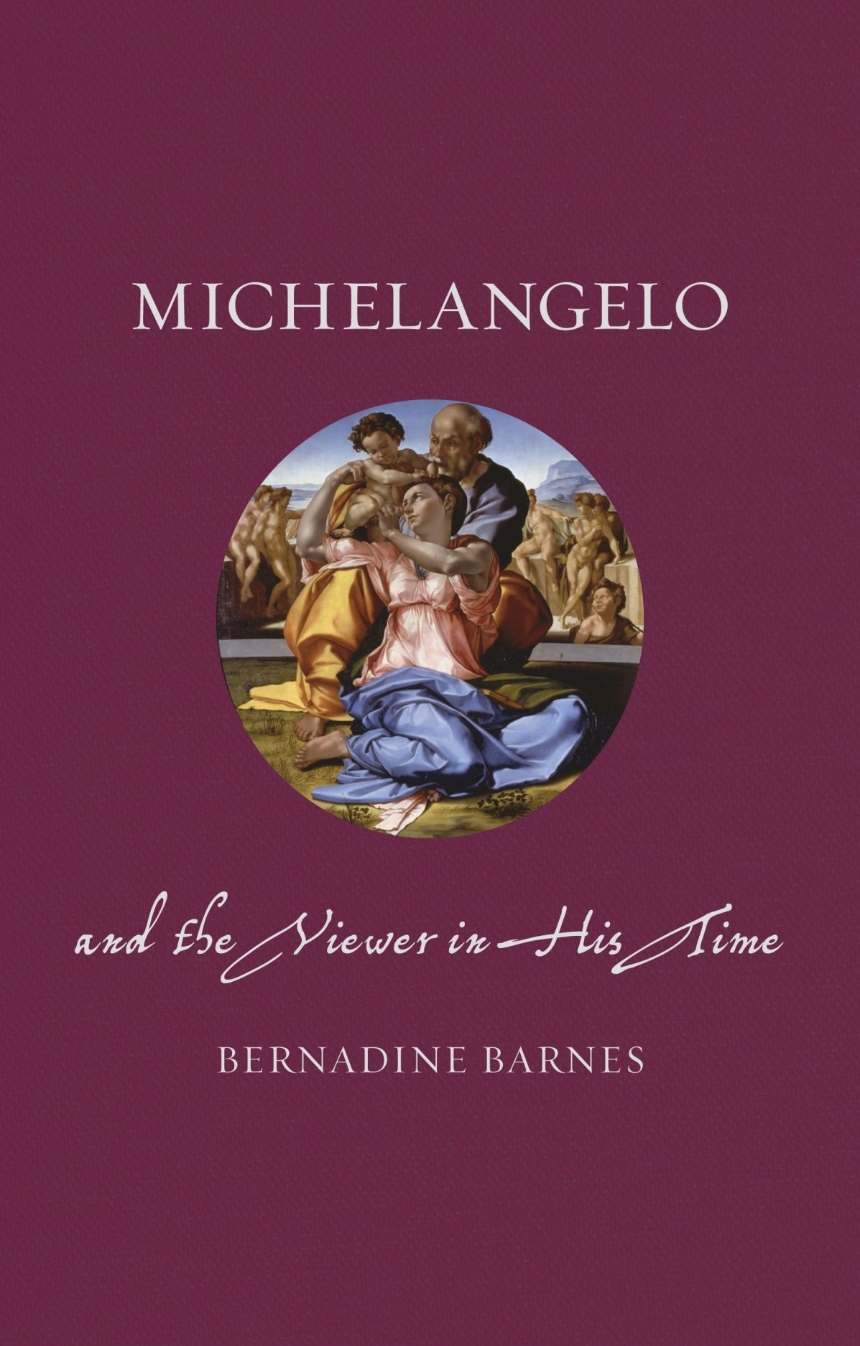Distributed for Reaktion Books
Michelangelo and the Viewer in His Time
Now in paperback, an invitation to re-experience the works of the Italian master as they would have been encountered in his time.
Today most of us enjoy the work of famed Renaissance artist Michelangelo by perusing art books or strolling along the galleries of a museum—and the luckier of us have had a chance to see his extraordinary frescoes on the ceiling of the Sistine Chapel. But as Bernadine Barnes shows in this book, even a visit to a well-preserved historical site doesn’t quite afford the experience the artist intended us to have. Bringing together the latest historical research, she offers us an accurate account of how Michelangelo’s art would have been seen in its own time.
As Barnes shows, Michelangelo’s works were made to be viewed in churches, homes, and political settings, by people who brought their own specific needs and expectations to them. Rarely were his paintings and sculptures viewed in quiet isolation—as we might today in the stark halls of a museum. Instead, they were an integral part of ritual and ceremonies, and viewers would have experienced them under specific lighting conditions and from particular vantages; they would have moved through spaces in particular ways and been compelled to relate various works with others nearby. Reconstructing some of the settings in which Michelangelo’s works appeared, Barnes reassembles these experiences for the modern viewer. Moving throughout his career, she considers how his audience changed, and how this led him to produce works for different purposes, sometimes for conventional religious settings, but sometimes for more open-minded patrons. She also shows how the development of print and art criticism changed the nature of the viewing public, further altering the dynamics between artist and audience.
Historically attuned, this book encourages today’s viewers to take a fresh look at this iconic artist, seeing his work as they were truly meant to be seen.
Today most of us enjoy the work of famed Renaissance artist Michelangelo by perusing art books or strolling along the galleries of a museum—and the luckier of us have had a chance to see his extraordinary frescoes on the ceiling of the Sistine Chapel. But as Bernadine Barnes shows in this book, even a visit to a well-preserved historical site doesn’t quite afford the experience the artist intended us to have. Bringing together the latest historical research, she offers us an accurate account of how Michelangelo’s art would have been seen in its own time.
As Barnes shows, Michelangelo’s works were made to be viewed in churches, homes, and political settings, by people who brought their own specific needs and expectations to them. Rarely were his paintings and sculptures viewed in quiet isolation—as we might today in the stark halls of a museum. Instead, they were an integral part of ritual and ceremonies, and viewers would have experienced them under specific lighting conditions and from particular vantages; they would have moved through spaces in particular ways and been compelled to relate various works with others nearby. Reconstructing some of the settings in which Michelangelo’s works appeared, Barnes reassembles these experiences for the modern viewer. Moving throughout his career, she considers how his audience changed, and how this led him to produce works for different purposes, sometimes for conventional religious settings, but sometimes for more open-minded patrons. She also shows how the development of print and art criticism changed the nature of the viewing public, further altering the dynamics between artist and audience.
Historically attuned, this book encourages today’s viewers to take a fresh look at this iconic artist, seeing his work as they were truly meant to be seen.

